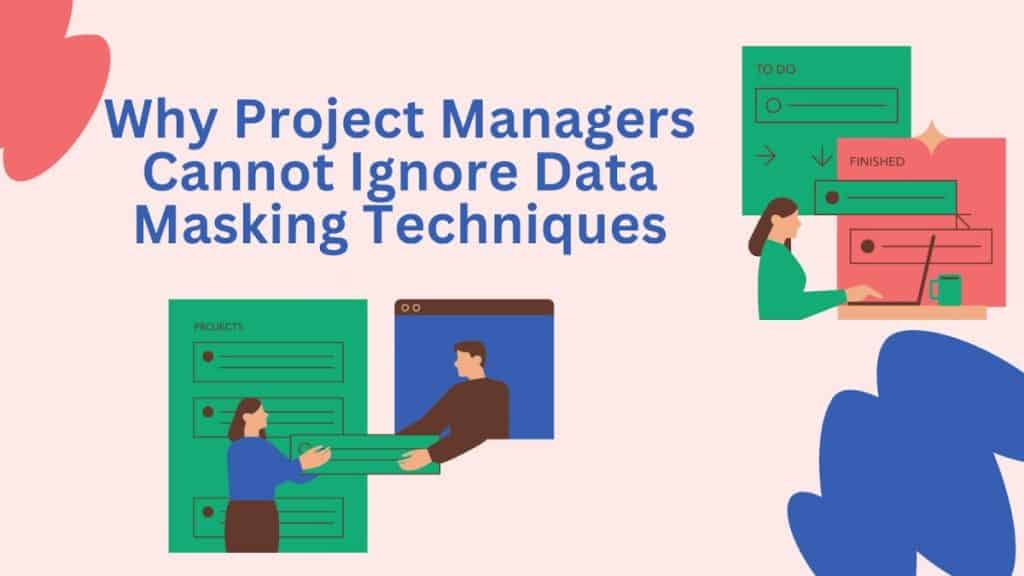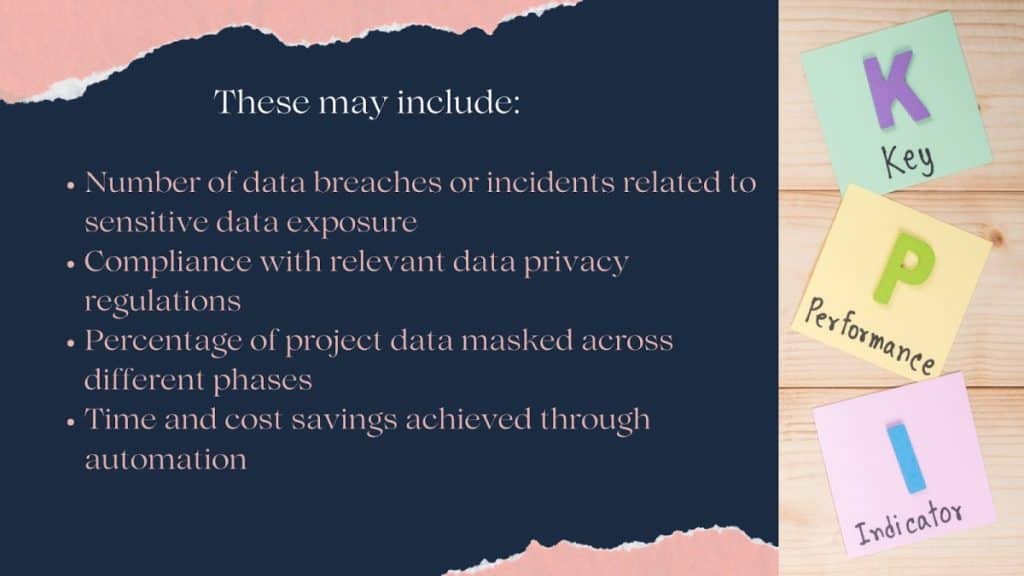Why Project Managers Cannot Ignore Data Masking Techniques

In the ever-evolving landscape of project management, data privacy, and security have emerged as paramount concerns. As organizations grapple with stringent regulatory requirements and escalating cyber threats, the need for robust data masking techniques has become a critical component of successful project execution.
By overlooking the significance of data masking, project managers risk exposing sensitive information, compromising compliance, and eroding customer trust—consequences that can have far-reaching implications for their projects and organizations.
What is Data Masking?
Data masking, or obfuscation or de-identification, protects sensitive or confidential data by replacing or obscuring it with fictitious or anonymized information. The primary goal of data masking is to ensure that sensitive data remains secure and compliant with data privacy regulations while still allowing authorized users or systems to work with a functional representation of the data.
The Importance of Data Masking in Project Management
The Growing Relevance of Data Privacy Regulations
The implementation of data privacy regulations, such as the General Data Protection Regulation (GDPR) and the California Consumer Privacy Act (CCPA), has redefined the way organizations handle personal and sensitive data. Failure to comply with these regulations can result in substantial financial penalties and reputational damage. Project managers must recognize the pivotal role of data masking in ensuring adherence to these regulations and safeguarding sensitive information from unauthorized access or misuse.
Addressing Cybersecurity Threats
Neglecting data masking can be catastrophic in an era of sophisticated cyber-attacks and data breaches. Cybercriminals constantly seek vulnerabilities to exploit, and unprotected sensitive data presents a lucrative target. By implementing robust data masking techniques, project managers can significantly reduce the risk of data breaches and the associated financial and reputational repercussions.
Maintaining Customer Trust
In today’s data-driven world, customers entrust organizations with their personal and sensitive information. A breach of this trust can have severe consequences, leading to loss of customer loyalty, reputational damage, and legal implications. By masking data, project managers demonstrate a commitment to protecting customer data, fostering trust, and strengthening stakeholder relationships.
Data Masking as a Tool for Risk Mitigation
Preventing Data Exposure in Testing and Training
One of the most common scenarios where data masking is essential is during the testing and user training phases. Project teams often require access to realistic data sets to ensure thorough testing and practical training. However, working with live, unmasked data poses significant data exposure risks.
Mitigating Insider Threats
While external cyber threats are a significant concern, insider threats pose an equally significant risk. Disgruntled employees, negligent contractors, or malicious insiders can intentionally or unintentionally compromise sensitive data. Data masking helps limit the surface area for potential insider threats by obscuring sensitive information, reducing the risk of data breaches and unauthorized access.
Operational Benefits for Project Managers
Enabling Productive Collaboration
Effective collaboration is crucial for project success, particularly in today’s distributed and cross-functional teams. Data masking allows project teams to work with realistic datasets without compromising sensitive information, fostering seamless collaboration and streamlining workflows. This is especially beneficial in DevOps environments, where rapid iterations and continuous integration rely on secure data access.
Automation and Efficiency Gains
Manual data masking processes can be time-consuming and error-prone, hindering project efficiency. By leveraging automated data masking solutions, project managers can streamline these processes, reducing the risk of human error and freeing up valuable resources for other critical tasks. Automated data masking can be integrated into various project phases, ensuring consistent and reliable protection of sensitive data throughout the project lifecycle.
Integrating Data Masking into Project Management Frameworks
Agile Project Management
Data masking can be seamlessly incorporated into iterative development cycles in Agile project management methodologies. By masking sensitive data at the beginning of each sprint, project teams can work with secure datasets, facilitating rapid prototyping and continuous integration without compromising data security.
Waterfall Project Management
In the Waterfall model, data masking can be integrated into the various phases, such as requirements gathering, design, and testing. Project managers can ensure compliance and mitigate risks throughout the project lifecycle by masking sensitive data before it is shared with stakeholders or project teams.
Hybrid Project Management
Data masking can be tailored to fit the specific project needs of organizations that adopt a hybrid approach, combining elements of Agile and Waterfall methodologies. Project managers can leverage automated data masking solutions to maintain consistent data protection across the entire project lifecycle, regardless of the methodology employed.
Key Metrics and KPIs
Project managers should track key metrics and key performance indicators (KPIs) to assess the effectiveness of their data masking strategies.

Overcoming Challenges in Data Masking Implementation
Technical Complexity and Integration Issues
Implementing data masking techniques can present technical challenges, mainly when dealing with legacy systems or complex data architectures. Project managers should work closely with technical teams to ensure seamless integration of data masking solutions into existing systems and processes.
Organizational Resistance and Cultural Shift
Introducing new processes and technologies can often be met with resistance from stakeholders and team members. Project managers should prioritize change management and foster a team data privacy culture. Clear communication, training, and executive buy-in can help overcome organizational resistance and ensure the successful adoption of data-masking best practices.
Selecting the Right Data Masking Technique and Solution Provider
Various data masking techniques are available, including static and dynamic data masking. Project managers should carefully evaluate their project’s specific needs, data sensitivity levels, and performance requirements to select the most appropriate technique. Additionally, choosing the right data masking solution provider is crucial, considering scalability, ease of integration, and vendor support.
Comparison Table
| Data Masking Technique | Description | Advantages | Disadvantages |
| Static Data Masking | Sensitive data is permanently masked or obfuscated, creating a new masked dataset. | – Suitable for non-production environments – Preserves data integrity and consistency | – Limited flexibility for production environments – Requires creation of separate masked datasets |
| Dynamic Data Masking | Sensitive data is masked on-the-fly during runtime, based on predefined rules and user access levels. | – Suitable for production environments – Offers granular control and flexibility – Minimizes data duplication | – Potential performance overhead – Increased complexity in implementation and maintenance |
Frequently Asked Questions (FAQs)
How can data masking benefit project managers?
Data masking can help project managers comply with privacy regulations and avoid security risks. It also enables them to share test data freely with team members without compromising confidentiality, streamlining development processes and improving collaboration.
What are some common data masking techniques?
Various data masking techniques exist, such as tokenization (replacing sensitive data with random characters), shuffling (rearranging data elements), and encryption (scrambling data to make it unreadable). The best approach depends on the specific data type and the protection level required.
How can project managers implement data masking effectively?
Project managers can effectively mask data by identifying sensitive information, choosing masking techniques (substitution, shuffling, etc.), and automating the process for efficiency.
Conclusion
In today’s data-driven landscape, project managers can no longer overlook the critical importance of data masking techniques. By embracing robust data masking practices, project managers can mitigate risks, maintain regulatory compliance, and foster a data privacy and security culture within their teams. As cyber threats and data privacy regulations evolve, integrating data masking into project management frameworks will become increasingly essential for successful project execution.



